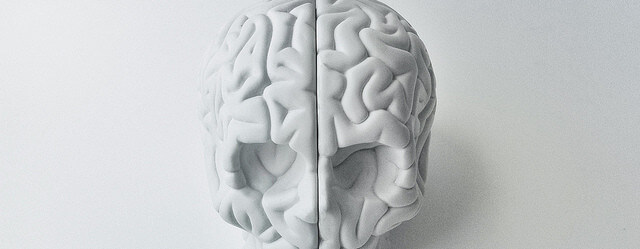Review by Brian McCarthy
Brain Rules: 12 Principles for Surviving and Thriving at Work, Home, and School by John Medina takes what neuroscientists have learned about the brain and explains it in a way anybody can understand. With a heavy emphasis on the brain as a product of evolution (and countless references to peer-reviewed studies), Medina covers 12 brain functions and explains what goes on in the brain when they take place. Having a better understanding of how the brain works means we can use the brain the way it was designed to be used. This can have major implications for helping people thrive in their daily life.
In this summary, I’ll briefly touch on 7 of the functions he mentions. Below is a quick recap of the points
Medina makes about the brain and how it relates to exercise, wiring, attention, memory, sleep, stress, and gender.
Exercise
Scientists believe that for thousands of years humans walked at least 12 miles a day. This suggests that the human brain developed and evolved while people were on the move. Movement being our natural state likely explains why there are so many positive brain-related benefits that are directly caused by exercise.
Regular exercise increases energy level, cognitive performance (reasoning, problem solving, memory, among others measures), attention, self-esteem, immune response, and balance. It has also been shown to decrease your risks of disease (it cuts the likelihood of getting dementia and Alzheimer’s by at least half), and significantly lowers your chances of getting both cancer and depression.
The reason it’s so beneficial to our brain’s health is twofold. Exercise makes oxygen available to the brain while clearing out some of the molecular waste that has built up there. It also helps our feeling of well-being by releasing serotonin, dopamine, and norepinephrine -which are all linked to improving mood and reducing stress.
And it doesn’t take much exercise to obtain these benefits. Even a small increase in exercise – something as minor as walking for 30 minutes 2-3 times per week – can cause dramatic improvement in all the areas mentioned above.
Wiring
Each person’s brain has the same overall structure. For instance, we all have an amygdala at the base of our brains that allows us to experience emotions (and the memories associated with them). But even though we all have the same basic structure, we all have our own unique wiring. The exact place a piece of information is stored, and how it connects to other areas of the brain, is different in each person.
The reason for this is because the wiring in our brains is always changing. Anytime we learn something or get a new experience we are creating new neural connections in our brains. We are also constantly losing neural connections. Whether a connection is gained or lost all has to do with how often it is used. Like a muscle, the more a connection is used the stronger it gets. If a connection isn’t used, it can atrophy and even disappear.
Attention
Part of Medina’s chapter on attention is dedicated to debunking the myth of “multitasking”. Simply put, he argues that multitasking doesn’t exist. Because even though a person can do two things at once, he can only pay attention to one task at a time. As a result, when people try to multitask, they just wind up doing two things poorly.
Multitasking can cause a lot of trouble. For instance, drivers who talk on the phone miss 50% of visual cues on the road and are a full second slower to stop the car in an emergency. People who try and multitask when working not only take longer to complete the task, but end up making more errors (so if you want to work productively, work in an environment that minimizes distraction and interruption).
The thing is, multitasking may appear to be a seamless process where our attention is divided, but that’s just not the case. You can only focus on one thing at a time and shifting your attention to another task is a sequential process: First blood has to rush to the area of the brain that alerts the rest of the brain to the fact that you’re about to switch attention. Then the brain sends of a signal looking for the neurons that can assist in the new task. The brain must then disengage from the areas that were working on the first task and more fully engage the areas that will perform the second task.
In short, when you multitask, your brain constantly has to stop and restart each task. That’s what makes multitasking so inefficient.
Memory
As mentioned in the “wiring” section, learning causes our brains to form new neural connections. But if we don’t reinforce those connections then they are lost. Our neurons “reset” which means the information we learned is no longer available.
And this loss happens quickly. It’s been shown that 90% of what people learn in a classroom setting is forgotten within 30 days – and most of that forgetting takes place in the first two hours after class.
But there are some things that will help strengthen that neural connection and allow new information to stick. Here are just a few of the factors that will influence your ability to remember what you’ve learned:
- Repetition. To make something stick in your brain long-term, you want to repeat that information in spaced out intervals. Review a piece of information, and then look at it again in a few hours – and again a few hours after that – and again the next day, etc. That will continuously strengthen the neural connection and give the information more staying power. If you simply try to memorize the information all at once, you’ll forget most of it very quickly.
- Elaborate. It can be tough to make a small piece of information stick. But if you can elaborate that information (go into more detail, use metaphors, etc) then more parts of the brain will become activated when processing that information. With more parts of the brain relating to a piece of information, it’s more likely that a strong connection will form somewhere. As a result you’ll be able to retain the important piece of information.
- Appeal to multiple senses. The reason this works is similar to elaboration. The more senses are activated; the more parts of your brain are at work in processing the information. For example, studies have shown that someone is more likely to remember what you say if you touch them while you say it. Also, people remember 50% more of what they learned at a lecture if there are pictures that go along with what they’re hearing.
- State-dependent learning. If you are in a certain mood or environment when you learn a piece of information, then you will have an easier time recalling that information when you put yourself in that same mood or environment. This is known as state-dependent learning.
Sleep
There is not too much uniform structure when it comes to sleep. The time of night a person should go to bed and the number of hours of sleep required varies from person to person. And while some only need to sleep at night, many others are better served by mixing a mid-afternoon nap into their day.
But across the board, we know that sleep is incredibly important. A lack of sleep can increase stress, hurt your metabolism, decrease your cognitive performance (it hinders your memory, focus, and ability to make decisions/think logically) and ruin your mood.
Exactly how sleeps helps in all these areas is still a bit of a mystery. It’s tempting to think that sleep gives the brain a chance to rest, but in fact our brains are more active when asleep than awake. The only area where it is clear just how sleep helps the brain is with learning.
Sleep helps us learn because it gives our brain time to process the information that it took in during the day. Neural connections that were made become strengthened during sleep, which helps what we learned become more deeply ingrained. However, if sleep is interrupted, this process can get disturbed and this cognitive reinforcing isn’t as effective.
Stress
Stress can sometimes be a good thing. Going back to evolution, stress gave us the alertness we needed to avoid that saber-toothed tiger lurking in the bushes. The benefits continue today, as a small amount of stress and uncertainty has been shown to increase our ability to solve problems.
However, over a long period of time stress causes nothing but trouble. Chronic stress hurts our immune system (decreases our white blood cell count which makes it hard to fight infection), decreases cognitive
function (memory, focus, as well as our abilities to adapt and process new information) and can even cause depression.
The reason chronic stress can cause depression has to do with how stress effects the brain. When too many stress hormones remain in the brain for too long it can overwhelm our brains ability to handle stress. In fact, the brain’s response to stress will completely shut down, causing a condition called learned helplessness. This is when stress has flooded a person’s system for so long that he has completely given up. He’s learned there’s nothing he can do to change his situation. Even if that’s not true and there is something he can do, his brain is incapable of seeing it that way.
Gender
While there are clear structural differences between the male and female brain, scientist can’t say what kind of meaningful conclusions – if any – can be reached from this. But scientists have found significant gender differences in the use of the brain. Specifically, how men and women experience emotion and how they communicate.
Women are thought of as being more emotional than men. But really, this is likely a result of that fact that men and women experience emotion differently. Women recall emotionally important events much quicker and with more intensity and detail than men. It’s as if women experience an emotion in HD and surround sound, while men are stuck with an old 10inch black-and-white TV.
Another difference between men and women has to do with communication styles. Women communicate with more eye contact and face-to-face dialogue. When women bond it’s through talking and sharing personal information. Men on the other hand, use less eye contact and often don’t even face one another when communicating. Rather than developing bonds through talking, they bond through shared physical activity. These gender differences begin at childhood, and remain throughout our adult lives.
And the differences in communication styles don’t end there. There’s also a difference in the structure of how men and women communicate. Women, for instance, tend to be more collaborative. When making a decision they will all talk together until they reach a shared consensus. Men tend to communicate in more of a hierarchal fashion. One man will simply give out orders, and the rest will follow.
No one communication style is necessarily better than the other, and it’s a mistake to simply expect women to adopt the male communication style. After all, women have learned that communicating the same way men do simply isn’t a good thing for them to do. Studies show that when women communicate in a man’s style (being direct, giving orders) they are viewed as “bossy” or even “bitchy”. When men behave in the exact same manner, they are simply viewed as “leaders”.
Conclusion
In addition to the sections mentioned above, this book has whole chapters devoted to how the brain functions in terms of survival, exploration, vision, and sensory integration. Medina also takes time in each chapter to give suggestions on how to integrate what we know about the brain to improve schools and the workplace – something I did not get into. People curious about how the brain works and how that knowledge can be used to improve these areas will certainly want to pick up a copy of Brain Rules today.
Get the Book: Brain Rules: 12 Principles for Surviving and Thriving at Work, Home, and School | Amazon





